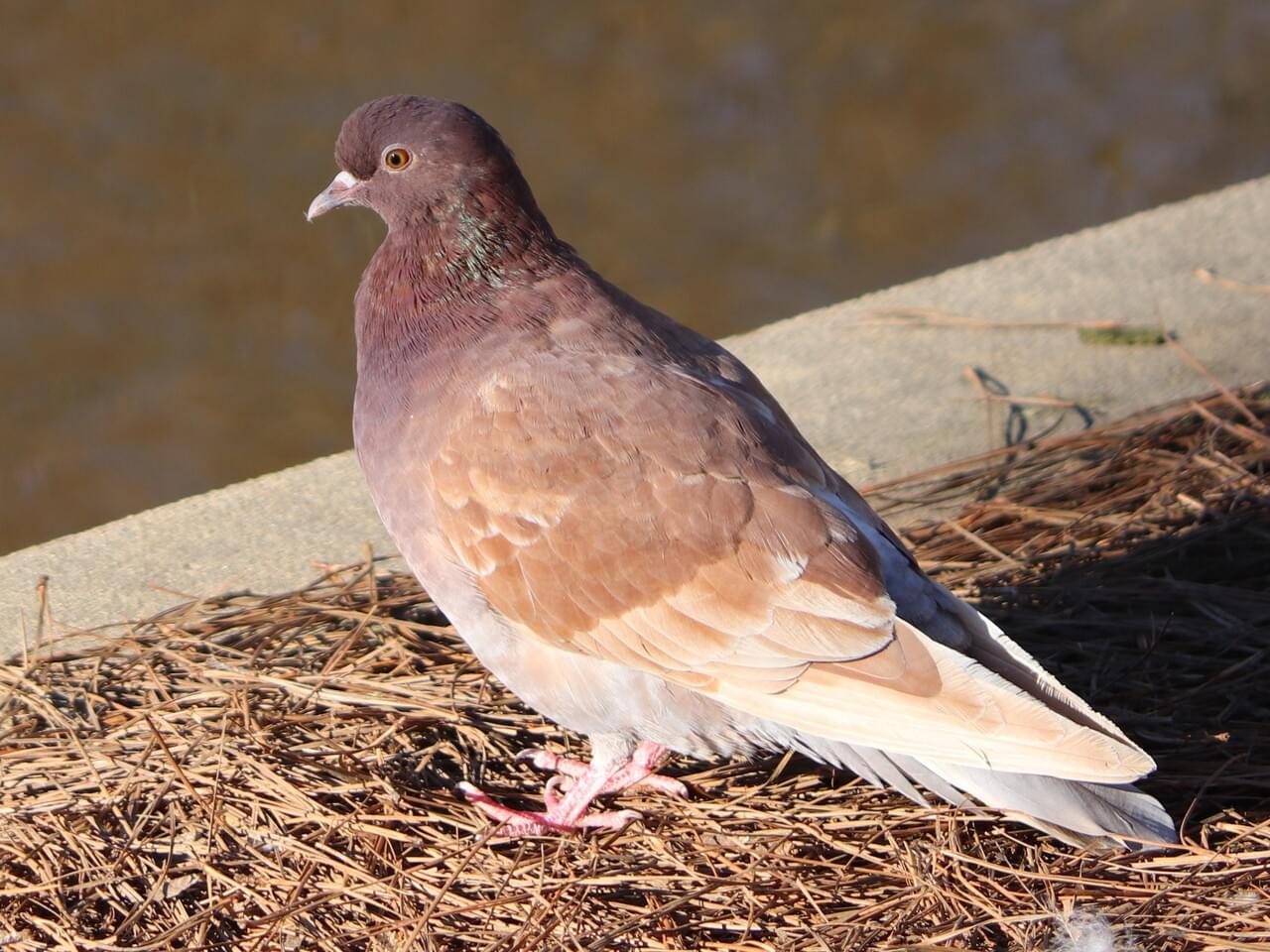 Photo ©
Liz Clayton Fuller
Photo ©
Liz Clayton Fuller
Rock Pigeon
Main Focal Species
A common sight in cities around the world, Rock Pigeons crowd streets and public squares, living on discarded food and offerings of birdseed. In addition to the typical blue-gray bird with two dark wingbars, you'll often see flocks with plain, spotted, pale, or rusty-red birds in them. Introduced to North America from Europe in the early 1600s, city pigeons nest on buildings and window ledges. In the countryside they also nest on barns and grain towers, under bridges, and on natural cliffs.
Range

Habitat
Urban areas, farmland, and rocky cliffs. May gather in large flocks in urban parks where people feed them.
Food
Seeds, fruits, rarely invertebrates. Pigeons also readily eat food intentionally or unintentionally left by people, including bread crumbs and littered food.
Behavior
Pigeons peck at food on the ground and drink by placing their bill in water, using it like a straw. When threatening a rival, pigeons may bow and coo, inflating their throat and walking in a circle. A male pigeon courts his mate by bowing, cooing, inflating his throat, and strutting in a circle around the female. The pair may preen one another and the male may grasp the female’s bill, regurgitating food as a courtship gesture. When ready to mate, the female crouches and the males jumps on her back. The male brings one twig or stem at a time to the female to build a nest. He incubates the eggs from mid-morning to late afternoon; she takes her turn in late afternoon and overnight to mid-morning. Both parents brood the young and feed them by regurgitating a milky liquid secreted by the lining of the birds' crops.
Nesting
During nest building, the female sits on the nest and makes a flimsy platform of straw, stems, and sticks from materials brought to her one at a time by the male. Pigeons reuse their nests many times, and they don't carry away the feces of their nestlings the way many birds do. This means that over time the lightweight nest grows into a sturdy, potlike mound, sometimes incorporating unhatched eggs and mummies of dead nestlings.
Appearance
Typical Sound
© Paul Marvin | Macaulay Library
Size & Shape
Larger and plumper than a Mourning Dove, Rock Pigeons are tubby birds with small heads and short legs. Their wings are broad but pointed wings and the tail is wide and rounded.
Color Pattern
Variable in color, but most birds are bluish gray with two black bands on the wing and a black tip to the tail. Most birds have iridescent throat feathers. Wing patterns may include two bars, dark spots, or can be plain. The tail is usually dark tipped.
Plumage Photos
Similar Species
Band-tailed Pigeons are grayish overall, with yellow legs and bill and a white collar on the back of the neck. Eurasian Collared-Doves are pale grayish-tan overall with a black mark on the back of the neck. Mourning Doves are gray-brown with black spots on the wings; they're more slender and have a long, pointed tail. White-winged Doves have a white patch on the wings, visible both in flight and at rest, as a strip along the edge of the wing.
Did you know?!
- Both male and female Rock Pigeons produce “pigeon milk," a liquid loaded with protein and fat for their offspring. Hatchlings eat nothing but pigeon milk for the first three days, then gradually switch to seeds.
- Homing Pigeons are the same species as ordinary city pigeons. They can find their way home from hundreds of miles away, and have been used in war to deliver messages across enemy lines.









